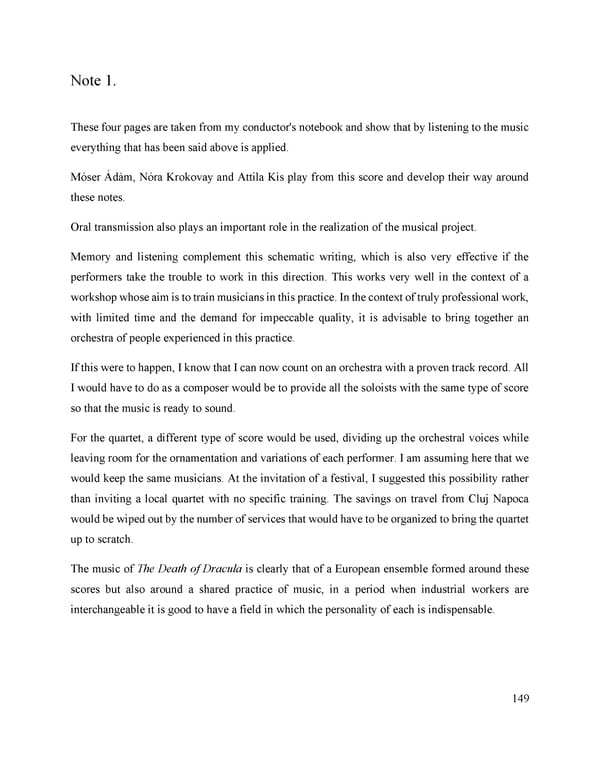Note 1. These four pages are taken from my conductor's notebook and show that by listening to the music everything that has been said above is applied. Móser Ádám, Nóra Krokovay and Attila Kis play from this score and develop their way around these notes. Oral transmission also plays an important role in the realization of the musical project. Memory and listening complement this schematic writing, which is also very effective if the performers take the trouble to work in this direction. This works very well in the context of a workshop whose aim is to train musicians in this practice. In the context of truly professional work, with limited time and the demand for impeccable quality, it is advisable to bring together an orchestra of people experienced in this practice. If this were to happen, I know that I can now count on an orchestra with a proven track record. All I would have to do as a composer would be to provide all the soloists with the same type of score so that the music is ready to sound. For the quartet, a different type of score would be used, dividing up the orchestral voices while leaving room for the ornamentation and variations of each performer. I am assuming here that we would keep the same musicians. At the invitation of a festival, I suggested this possibility rather than inviting a local quartet with no specific training. The savings on travel from Cluj Napoca would be wiped out by the number of services that would have to be organized to bring the quartet up to scratch. The music of The Death of Dracula is clearly that of a European ensemble formed around these scores but also around a shared practice of music, in a period when industrial workers are interchangeable it is good to have a field in which the personality of each is indispensable. 149
 Lost Analogue: Exploring Film, Music, and Interdisciplinary Methods in Education Page 149 Page 151
Lost Analogue: Exploring Film, Music, and Interdisciplinary Methods in Education Page 149 Page 151